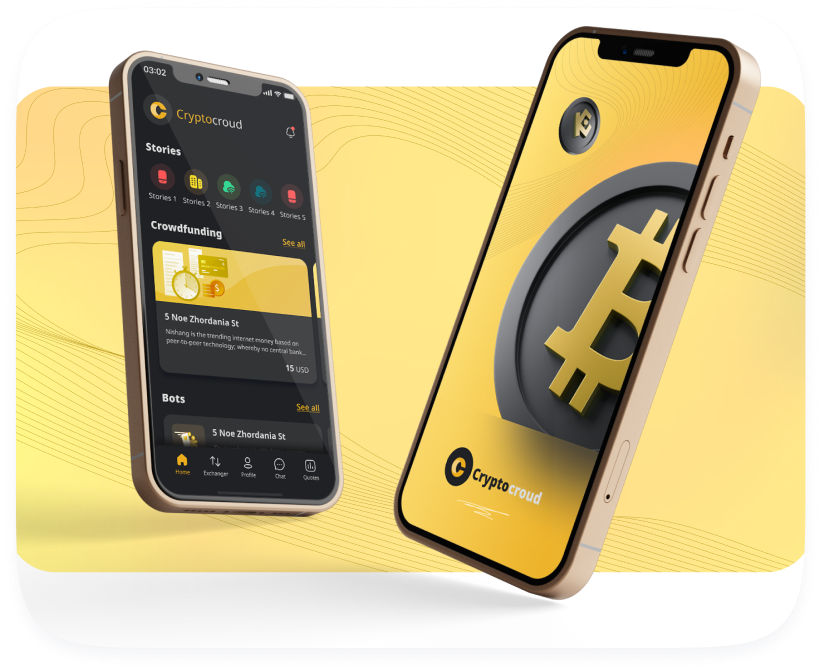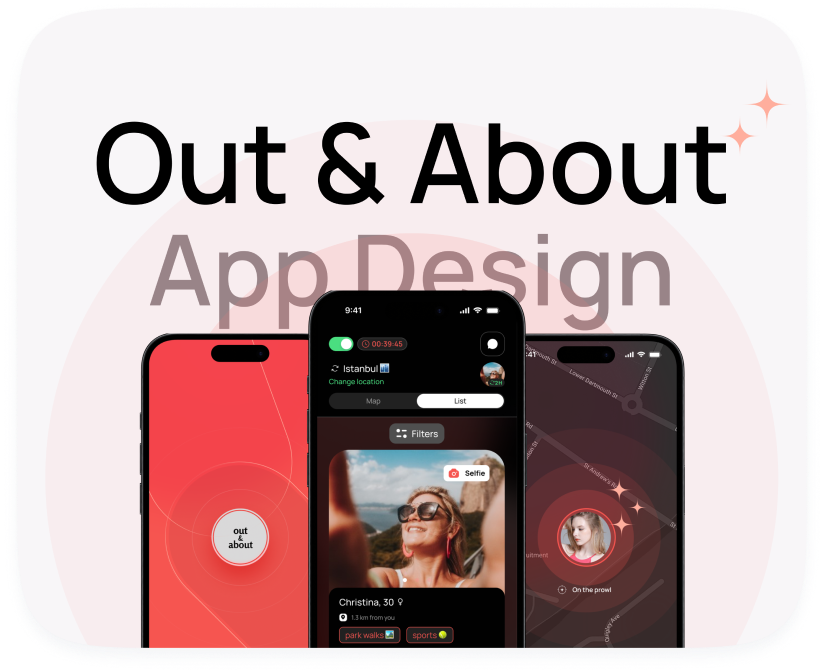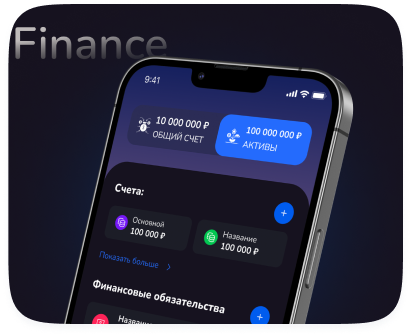
We build mobile apps





We work directly with every client
We deliver solutions with guaranteed results.

We build mobile apps






















It’s similar to buying a car at a dealership: you can go with the basic model, or choose a fully loaded version — it all depends on your needs and goals.

How to create YOUR OWN ChatGPT?

How to PROPERLY create a mobile app in 2024 | Step by step

You pay > We work > You receive the results. If you’re satisfied, you pay the next installment.
We need to have a call and discuss your specific requirements.
One thing we can say for sure: projects under 500,000 rubles are not feasible — we can’t deliver the required quality for less.
We launch, gather user feedback, and add new features that help you earn more from the app.
During development, I always design the architecture to make future updates and improvements easy and convenient.
Some apps perform better with influencer marketing, others through ad networks, and sometimes it’s even effective to buy a contact list and set up retargeting 😊
It all depends on your project’s specifics and is discussed personally.
How we can help:
- Set up ASO (App Store Optimization) and create an attractive app store page to drive free, organic installs.
- Help you develop the right promotion strategy tailored to your app.
- Share contacts of advertising experts I personally work with.
Спросить ChatGPT
The only ongoing cost is paying for the server (hosting).
You pay a subscription fee for the server. The more users your app has, the more server resources it consumes, and the higher the hosting costs.
At the early stages, when you have few users, the server will be FREE.
After that, the cost will gradually increase, but it remains affordable.
For example, an app with 100,000 users spent about $150 per month on hosting.
On-Demand App Development Services - Uber-like Solutions
In today's fast-paced world, convenience and immediacy are paramount. On-demand app development has emerged as a powerful solution for businesses looking to meet the evolving needs of consumers who expect instant access to goods and services. This article explores the intricacies of on-demand app development, focusing on creating Uber-like solutions and the key considerations for success.
What is On-Demand App Development?
On-demand app development refers to the process of creating mobile applications that connect users with providers of specific services or products instantly. These apps leverage technology to facilitate real-time transactions, streamline operations, and enhance customer experiences. The popularity of companies like Uber, Lyft, DoorDash, and Airbnb has fueled the demand for similar solutions across various industries.
Key Features of On-Demand Apps
A successful on-demand app typically incorporates several core features. These features contribute to a seamless user experience and efficient service delivery:
- User Registration and Profiles: Secure and straightforward registration processes with comprehensive user profile management.
- Geolocation: Real-time location tracking and mapping to connect users with nearby service providers.
- Search and Filtering: Robust search functionality and filtering options to help users find the specific services they need.
- Real-time Communication: In-app messaging, push notifications, and call functionality for direct communication between users and providers.
- Booking and Scheduling: Easy-to-use booking and scheduling systems for reserving services in advance or on demand.
- Payment Integration: Secure and reliable payment gateways to facilitate seamless transactions.
- Reviews and Ratings: Feedback mechanisms for users to rate and review service providers, promoting quality and accountability.
- Admin Panel: A comprehensive admin panel for managing users, services, providers, and overall app operations.
Benefits of On-Demand App Development
Investing in on-demand app development can bring numerous benefits to businesses:
- Increased Revenue: By offering instant access to services, businesses can attract a wider customer base and increase revenue streams.
- Enhanced Customer Satisfaction: On-demand apps provide convenience and efficiency, leading to higher levels of customer satisfaction and loyalty.
- Improved Efficiency: Automation and streamlined processes reduce operational costs and improve overall efficiency.
- Data-Driven Insights: The app generates valuable data about user behavior, service demand, and provider performance, enabling businesses to make informed decisions.
- Competitive Advantage: An on-demand app can differentiate a business from competitors and establish it as a leader in its industry.
Industries Embracing On-Demand App Development
The on-demand model is applicable across a wide range of industries, including:
- Transportation: Ride-hailing services, taxi apps, and delivery services.
- Food Delivery: Ordering food from restaurants and having it delivered to your door.
- Healthcare: Connecting patients with doctors for virtual consultations and house calls.
- Home Services: Booking plumbers, electricians, cleaners, and other home service providers.
- Beauty and Wellness: Scheduling appointments with salons, spas, and fitness trainers.
- Logistics: Managing and tracking shipments and deliveries.
Challenges of On-Demand App Development
While on-demand app development offers significant opportunities, it also presents several challenges:
- Complex Technology: Developing a robust and scalable on-demand app requires expertise in various technologies, including mobile app development, geolocation, payment integration, and real-time communication.
- User Acquisition: Attracting and retaining users in a competitive market requires a strong marketing strategy and ongoing user engagement efforts.
- Scalability: The app must be able to handle a large number of users and transactions without compromising performance.
- Security: Protecting user data and ensuring secure transactions is critical for maintaining trust and preventing fraud.
- Logistics and Operations: Managing the logistics of connecting users with providers and ensuring smooth service delivery can be complex.
- Provider Management: Recruiting, training, and managing a network of reliable service providers is essential for maintaining quality and consistency.
Key Considerations for Successful On-Demand App Development
To overcome these challenges and create a successful on-demand app, businesses should consider the following:
- Define a Clear Value Proposition: Identify a specific problem that the app solves and clearly communicate the value it provides to users.
- Focus on User Experience: Design a user-friendly and intuitive app that is easy to navigate and provides a seamless experience.
- Choose the Right Technology Stack: Select a technology stack that is scalable, secure, and reliable.
- Develop a Robust Marketing Strategy: Create a comprehensive marketing plan to attract and retain users.
- Prioritize Security: Implement robust security measures to protect user data and prevent fraud.
- Provide Excellent Customer Support: Offer responsive and helpful customer support to address user issues and concerns.
- Continuously Iterate and Improve: Regularly gather user feedback and use it to improve the app and add new features.
The Development Process
The on-demand app development process typically involves the following stages:
- Discovery and Planning: Defining the project scope, target audience, and key features. Conducting market research and competitive analysis.
- Design: Creating wireframes and mockups to visualize the app's user interface and user experience.
- Development: Writing the code and building the app's functionalities. This includes front-end development (user interface), back-end development (server-side logic and database), and API integration.
- Testing: Thoroughly testing the app to identify and fix bugs and ensure it meets quality standards. This includes unit testing, integration testing, and user acceptance testing.
- Deployment: Releasing the app to the app stores (Apple App Store and Google Play Store).
- Maintenance and Support: Providing ongoing maintenance and support to address user issues, fix bugs, and add new features.
Choosing the Right Development Partner
Selecting the right on-demand app development partner is crucial for success. Look for a company with experience in developing similar applications, a strong portfolio, and a team of skilled developers, designers, and project managers. Consider the following factors when choosing a development partner:
- Experience and Expertise: Proven track record in developing on-demand apps.
- Technical Skills: Proficiency in the required technologies.
- Communication and Collaboration: Effective communication and collaboration processes.
- Project Management: Strong project management skills to ensure timely delivery.
- Cost: Competitive pricing that aligns with your budget.
Table: Comparing On-Demand App Business Models
| Business Model | Description | Examples | Key Features |
|---|---|---|---|
| Service Aggregation | Connects users with multiple service providers. | Uber, Lyft | Geolocation, real-time tracking, payment integration, rating system. |
| Direct Service | The business provides the services directly to users. | Handy, Rinse | Booking system, scheduling, provider management, quality control. |
| Marketplace | Connects buyers and sellers of goods or services. | Etsy, Airbnb | Search and filtering, product listings, secure payment, review system. |
The Future of On-Demand App Development
The on-demand app market is expected to continue to grow in the coming years, driven by increasing consumer demand for convenience and technological advancements. Emerging trends in on-demand app development include:
- AI and Machine Learning: Using AI and machine learning to personalize user experiences, optimize service delivery, and predict demand.
- IoT Integration: Connecting on-demand apps with Internet of Things (IoT) devices to automate processes and provide real-time data.
- Blockchain Technology: Using blockchain for secure transactions and transparent record-keeping.
- Voice Assistants: Integrating on-demand apps with voice assistants like Alexa and Google Assistant to enable hands-free booking and control.
Conclusion
On-demand app development offers a powerful way for businesses to connect with customers and deliver services in a convenient and efficient manner. By understanding the key features, benefits, challenges, and considerations discussed in this article, businesses can create successful Uber-like solutions that meet the evolving needs of today's consumers. Choosing the right development partner and focusing on user experience are essential for navigating the complexities of on-demand app development and achieving long-term success.






